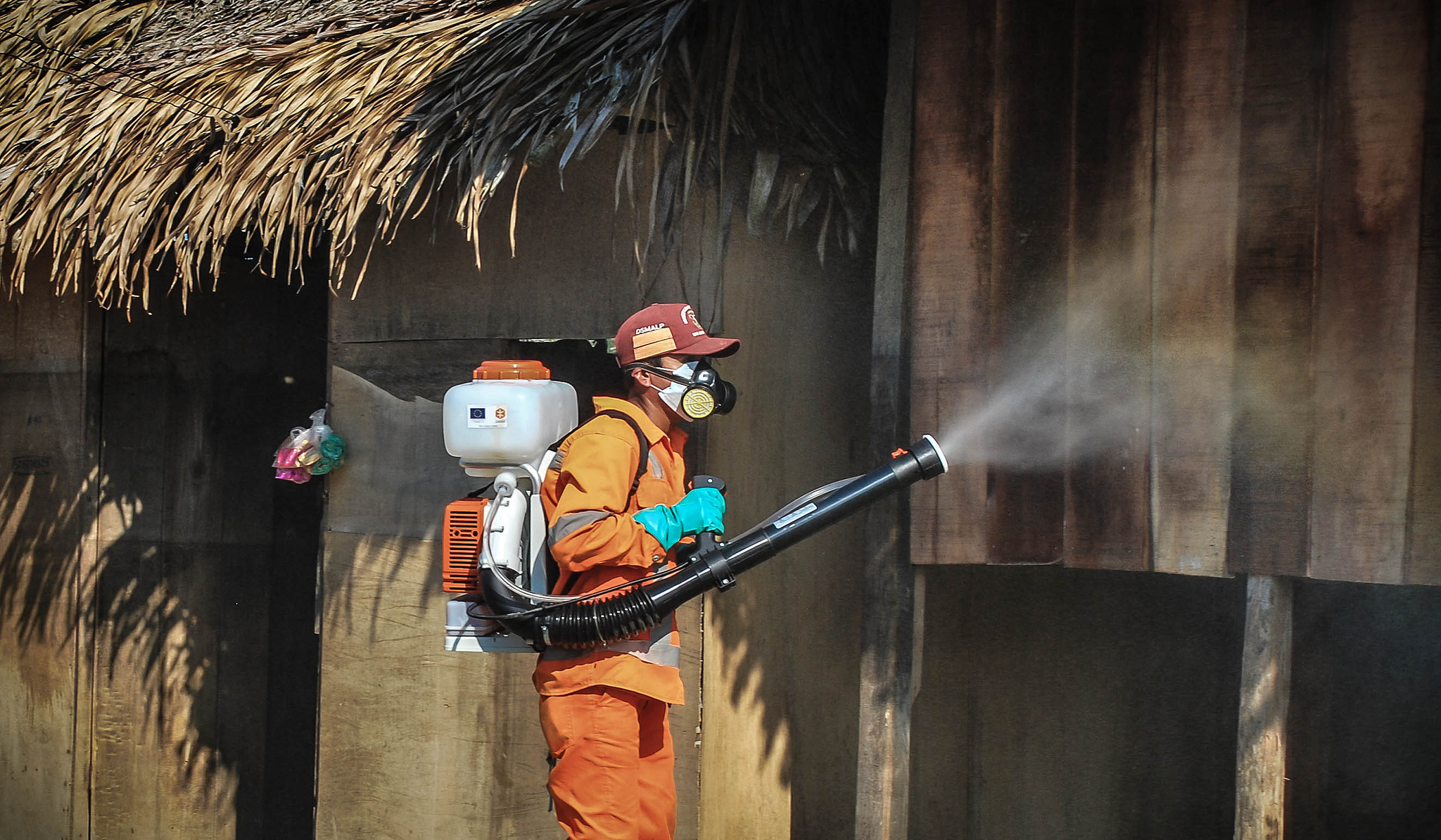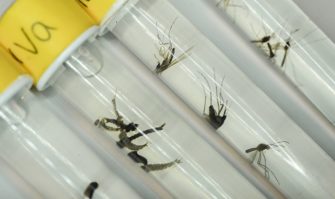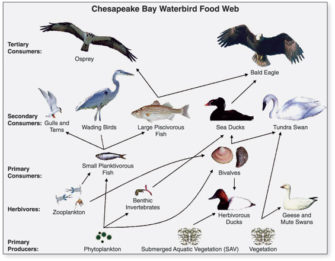
The emergence of any powerful technology forces us, as individuals and as a society, to reflect upon who we are as humans and how we relate to our planet, providing an opportunity to establish new ethical norms. The recent advent of CRISPR gene editing and in particular its proposed application to genetically engineer the environment necessitates such reflection.
CRISPR gene editing allows for the precise alteration of any genetic code. In humans, CRISPR-based therapeutics could cure heritable diseases, fight off viral infections like HIV, and even be deployed in cancer treatments. Paralleling recent advances in genomics, CRISPR marks the dawn of a whole new era in personalized precision medicine; where not only is the genetic basis of disease known, but where disease-causing mutations can now be repaired. The ease-of-use and low price tag of CRISPR has also allowed scientists to expand their focus beyond the human to the environment. In what I call precision earth medicine, CRISPR can be used to genetically design wild species in order to achieve desired health outcomes. Strategies using CRISPR gene editing are being developed to suppress vectors of infectious disease, restore valued ecosystems, and protect threatened species. This technological leap is straining our ethical frameworks.
Precision earth medicine is now possible because CRISPR enables the production of what are called self-propagating gene drives. An organism expressing a self-propagating gene drive encodes for a desired gene edit, as well as the CRISPR machinery to make that same edit in its future offspring. When an organism with a gene drive is released to mate in the wild, its offspring inherit that gene edit and the CRISPR tools needed to make that same edit in the gene it inherits from its wild parent. Over generations, gene drives can force inheritance of gene edits even if they are detrimental to a species’ wellbeing, to potentially impact every individual of a species. In this way, the release of only a few gene drive organisms can alter the evolutionary arc of wild plants and animals.

The most mature gene drive project to date intends to inhibit malaria transmission in Sub-Saharan Africa by suppressing its vector, the mosquito species Anopheles gambiae. CRISPR-based gene drives were recently engineered in laboratories to spread sterility in female mosquitos and have since been demonstrated to collapse a laboratory mosquito population in 11 generations. Since mosquitos only have a lifespan of about five weeks, if released into the wild this gene drive-bearing mosquito could cause the Anopheles population to be eradicated in as little as four years.
Eliminating the Anopheles mosquito species could save millions of human lives, but could also disrupt food webs or cause ecosystem disturbances. Unintended consequences to human health are also possible; a more difficult to control vector could evolve to transmit malaria or cause the malaria parasite to become more pathogenic. Moreover, when nearly 200 species are predicted to go extinct every day, is it morally acceptable to intentionally drive a species to extinction, even if it does cause human suffering? These are big decisions that will be informed by how humans view their role in nature and by a pervading environmental ethic.
Yet technology and how humans relate to technology tend to fall outside dominant frameworks in environmental ethics. When it comes to the environmental application of technology, ethical decision-making tends to revert to basal, either-or stances: organic farming versus GMOs, wind versus nuclear power, trees versus engineered carbon capture. A space for nuance is shrinking and as a scientist who generally supports technology, but who also feels a deep kinship with non-human nature, I struggle to find an environmental ethic that fits. When faced with decisions about if and how a gene drive should be used, this ethical void becomes frighteningly apparent.
To meet this void, I’ve found myself pulling from two divergent theories in environmental ethics: ecomodernism and deep ecology. Ecomodernists believe technologies (think intensified urbanization, nuclear power, and synthetic biology) can reduce dependence on natural resources. Their goal is that through technology human survival will eventually decouple from its dependence on the natural world and in doing so allow non-human environs to thrive. I’m drawn to the ecomodernism ethic simply because it acknowledges a role for technology in the human relationship with nature, but its inherent anthropocentricity makes it inadequate; ecomodernism holds humans and their technologies supreme, and in doing so severs the human relationship from the non-human world. This disconnect is dangerous because responsible decisions about environmental deployment of CRISPR will require humility and respect for the ecosystems being altered and the cultivation of these virtues requires we be in relationship with non-human nature.
On the other side of the spectrum, the deep ecology school of thought subscribes to the power of relationship and the interconnectedness of both human and non-human species. Humans are part of nature, not separate. Deep ecology also tends to bestow intrinsic value to nature; nature holds worth in and of itself, irrespective of how or if humans can benefit from it. However, often accompanying a deep ecologist’s ethos is a deep distrust of technology. Humans are part of nature, but somehow the fruit of our creativity—technology—is separate. Despite a strong focus on relationship, technologies are often excluded from that relationship. The deep ecology ethos, in its current form, is inadequate to support technology decision-making because it is biased towards not using technology to begin with.

I predict most deep-ecologists would be against a gene drive-based strategy to reduce malaria transmission, simply due to the fact that it’s a technological intervention. Moreover, a deep ecologist would likely argue that the mosquito holds intrinsic value and thus it is morally unacceptable to intentionally drive it to extinction, no matter the benefit to human health. An ecomodernist, on the other hand, would likely feel there is a moral obligation to use a gene drive, given that it could promote human flourishing and reduce human impact on the environment by reducing insecticide use. And here we arrive at a moral impasse where human health is pitted against environmental heath. To relieve this tension and enable responsible use of gene drive technology we will require a new environmental ethic (or at least a more thoughtful interpretation of existing ethos): one that respects both humans and non-human beings, and one that places us, as humans, and by extension the technologies we create, squarely within an interconnected planetary web.
To develop this new ethic, technology must first be perceived as natural. We must be reminded that technologies don’t just fall from the sky—they are products of human ingenuity are thus part of the evolutionary trajectory of our planet. Let’s take CRISPR gene editing as an example. CRISPR or clustered regularly interspaced palindromic repeats is a molecular process that evolved millions of years ago to immunize certain bacteria and archaea against viral infection. By encoding CRISPR tools and viral genetic codes from previous virus infections into their genome, bacteria can pass along protection against future infection to their offspring. Prokaryotic CRISPR systems had been destroying viruses for million of years when scientists Jennifer Doudna, Emmanuelle Charpentier, George Church, Feng Zhang and colleagues adapted this ancient system to develop CRISPR gene editing technology that can instead make genetic changes to any living thing. Here is just one example where humans have used what is available in nature to create new tools. This is not obviously different from harnessing fire or the development of wind-powered energy. CRISPR gene editing has been developed from within our planet not without, and thus deserves to sit within our planetary relationships.
So, what do decisions about gene-drive technology look like when decision-makers are equipped with an ethic built on respect and relationship? First and foremost, decisions would require that the flourishing of both humans and non-humans be equally upheld. Secondly, by inviting technology into our planetary relationships, decisions would reflect an appreciation that technology, when used appropriately, can be part of achieving that goal. In this way, the either-or scenario (mosquitos versus humans) disappears and a more nuanced, middle-ground approach comes into focus. A technology guided by a middle-ground ethic could result in a gene drive that merely impairs the mosquito’s ability to transmit malaria, but doesn’t impede its survival. This approach would save human lives, while still allowing the mosquito species to continue to live and thrive within its ecosystem. Such a strategy reflects a respect for the interconnectedness of human and environmental health and invites technology into that relationship to augment the flourishing of both.
As a global community we are standing at a cross roads. How we decide to wield new technologies in the face of climate change, resource scarcity, and biodiversity loss will shape the future of our shared planet. With CRISPR in hand, we as humans enter into an entirely new relationship with the non-human; a relationship that will require deep humility and respect for both nature and technology. It is of critical importance that our environmental ethos evolves to meet this challenge.

